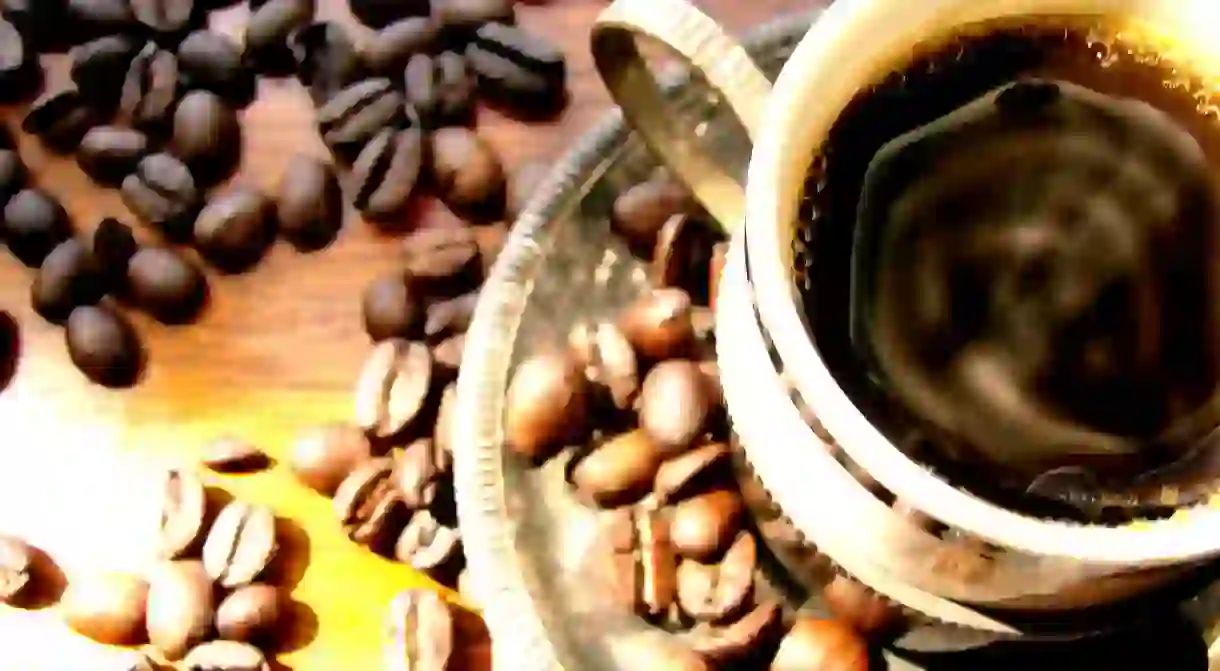How People Drink Coffee Around the World

Coffee. For some it’s what you grab from Starbucks to keep your eyes open at your desk, but for most it’s a way to connect with one another that has been passed down for centuries. When wandering into your local coffee shop or even when exploring lesser known venues, it’s often possible to find a glimmer of global culture and history inside.
Turkey
Said to be the home of the first coffee houses back in the 16th century, Turkey is still considered to house some of the best in the world today. These venues were once places where intellectuals and artists gathered to discuss politics and other matters. Their method of coffee brewing involves boiling finely ground espresso. Traditionally drunk after a meal, once you’ve finished your coffee, flip the cup over into the saucer and wait for the silt to drip down. Your friends will then read your fortune according to the patterns formed by the grounds. Similar to tarot card readings, it is not uncommon for Turks to get their fal (fortune) read, hoping to hear good news for the future.

Italy
Italians are well known for their coffee culture. To them, it’s something to be savored slowly, so on-the-go-drinkers be warned; most places don’t serve the drink in paper cups. Italians get an espresso and tend to drink it standing at the bar instead taking a seat at the nearest table. They also have a pretty firm belief about milk in your coffee—you aren’t supposed to order a cappuccino, latte or any other milk-based drink after lunch—they’re strictly morning beverages.
Vietnam
Usually out-shined by the coffee from its aptly named neighbor Java, Vietnam has a delicious coffee concoction of its own. Vietnamese coffee, or cà phê sữa đá, is made with a couple tablespoons of sweetened condensed milk, with dark roasted coffee slowly dripped over the top from a special type of metal filter. When it’s finally ready, pour it quickly into a glass full of ice and voilà! This practice has been around since coffee was first introduced in Vietnam by the French in the 1800s. During this period, they used condensed milk because access to the fresh kind was extremely rare.

Ireland
Finally, a coffee that’s a real hangover cure. This famous post-dinner drink combines many people’s favorite items: hot coffee, Irish whiskey, and thick cream (though whipped cream is most common now). While it was developed in the 40s in Castlederg, it was created to be consumed by American tourists, who couldn’t handle the cold, rainy weather that is so common in that part of the world.
Brazil
Those same Americans who needed a little warmth thought they were drinking Brazilian coffee, which consists of hot coffee, cream, and rum (or brandy), and some cinnamon on top. It should come as no surprise though that since Brazil is the world’s largest coffee producer, it has multiple popular methods of preparation. Cafezinho or simply, café, is loved so much that people recommend that you drink it in the morning, afternoon, or even at night—to aid your sleep! It’s similar to espresso, though the water is mixed with sugar before you add the coffee. Coffee is such an institution in Brazil that the period between 1880 to 1930 is referred to as café com leite (coffee with milk) in Brazilian politics—at this time, it was producing close to 100% of the world’s coffee.

Greece
Frappés are the Greek caffeinated beverage of choice, as here coffee’s main purpose is to provide a refreshing respite in the sweltering summer heat. It’s made from a couple teaspoons of instant coffee, sugar (to taste), and water. Then it’s mixed in a cocktail shaker until it becomes a foam. Finally, you add cold water and also evaporated milk. A Nestlé employee accidentally made this in Thessaloniki when he couldn’t find any hot water for his morning coffee. Now, the drink is considered one of Greece’s most popular beverages.
Ethiopia
While the Ottomans may have introduced coffee houses to the world, they took the product from this African nation. Buna, as it’s called here, holds an important role in ceremonies. The process takes around two hours and starts with the roasting of the beans. It’s considered an honor for hosts to conduct this process for their guests, and you should watch the grinding and filtering process as well. The coffee is brewed a total of three times—the first is called awel, the second kale’i, and the third baraka. Each round is poured from a traditional jug, or jebena, and is held a foot above the tray while serving. Nowadays, a lot of Ethiopians will put sugar in their coffee, but originally, they would add salt or a traditional butter loaded with savory spices.














